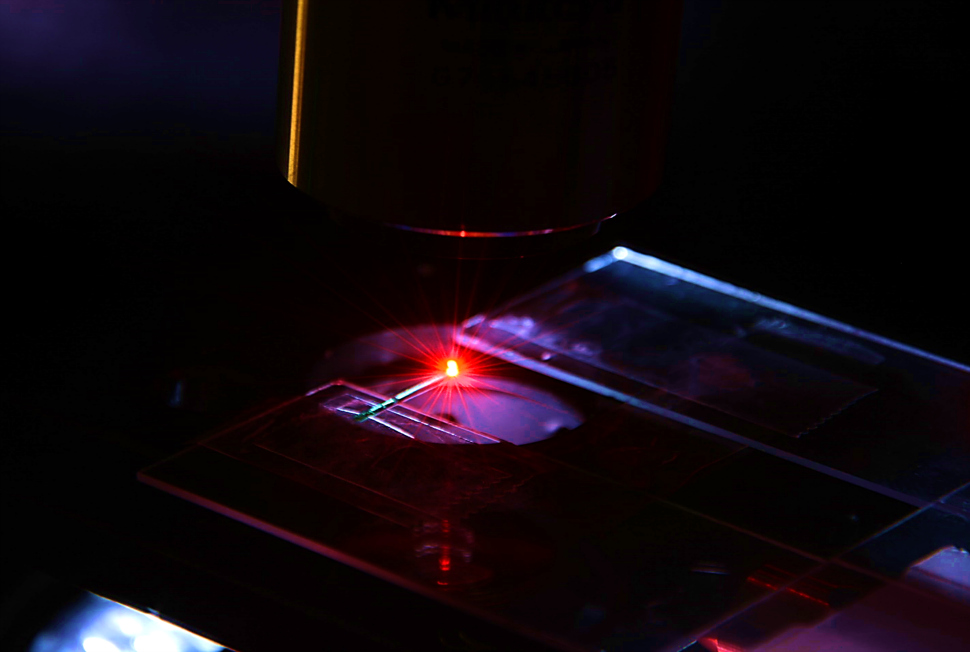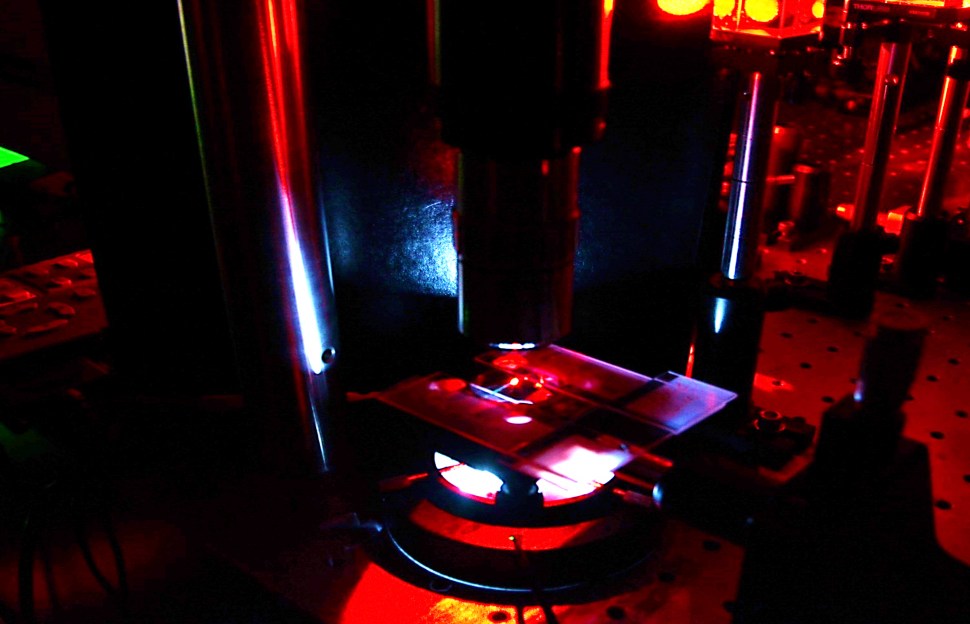Matthew Wood, September 25, 2016
We know the blood in our bodies can do amazing things. A team of biomedical engineering researchers at the University of Michigan is out to show just how amazing.
The group, led by Biomedical Engineering professor Xudong Fan, has found a way to use blood as a laser emitter. They hope to use the results to detect tumors, pinpoint their exact location and understand what drugs may or may not be ideal for a patient?s treatment.
The research stems from a technique that shines a laser light into blood infused with a fluorescent dye. The result allows researchers to determine structural changes within cells — helping doctors determine how far a tumor has spread.
?It?s a pretty new project and (so is) this field,? says Yu-Cheng Chen, a member of the team in his second year of PhD research. ?They call it biolaser, which means that you generate a laser from biological materials. This field is actually quite young. Not a lot of people have heard of us yet.?
The team uses properties of the blood to combine with a fluorescent dye — in this case, they are using the FDA-approved Indocyanine green (ICG).
?It?s kind of a pump,? Chen says. ?It excites the blood. What we?re really doing is collecting signals from the blood. It?s not just a pure laser signal. When the blood binds to ICG, it tells you if the proteins are binded.?

What that means to those of us out of the laboratory is the ability to detect tumors using just one drop of blood. Part of the key is in using the ICG to track differences in blood structure. The dye generates a fluorescent signal that can not only identify tumors, but tell doctors exactly where they begin and end.
?Patients could go to the hospital and drop off a drop of blood and we could detect if you have a tumor inside of your blood,? Chen says. ?If you go to the hospital and want to find out if you have cancer, you don?t want to take a biopsy to cut out part of your body. You don?t have to sacrifice surgery.?
Yeah, but just one drop?
?That?s what we?re expecting.?
In an ideal world, you go to the doctor, drop off your blood and the results come back negative. If you do have a tumor, that?s where the research helps doctors get it out of your body. Chen explains that following the signal from the blood mixed with the dye can pinpoint much more clearly where cancerous cells begin and end.
?In our research we use a capillary glass device, a very small laser cavity,? Chen says. ?So when the blood flows inside of the capillary and when we mix it with ICG, it generates a laser signal inside the tiny cavity. And then we can detect the laser signal from the blood.?
The discovery, while ambitious, is probably a few years away from actual human use. ?This is just a proof of concept. We have not been able to use it inside the human body,? cautions Chen.
One of the aspects of their research that could be put into use as quickly as next year is their work with drug testing. Their ability to analyze clinical drugs effects on human blood could help doctors determine which ones work — and ensure the ones that don?t aren?t a part of patient?s treatment.
?Before a lot of drugs are approved, they need to be tested outside the body,? Chen says. ?They usually will get pure blood from humans and try to test if this drug has an effect with the body. It?s kind of like an experiment. It could determine if a drug has a certain effect in the body, or if it?s poisonous. And we can see if it will do what it?s supposed to do in the body.?
All of these projects can change the way we diagnose and treat the way our bodies react to outside factors, ultimately through our bloodstreams. The blood knows all. Now we?re just able to see what it knows a little more clearly.







